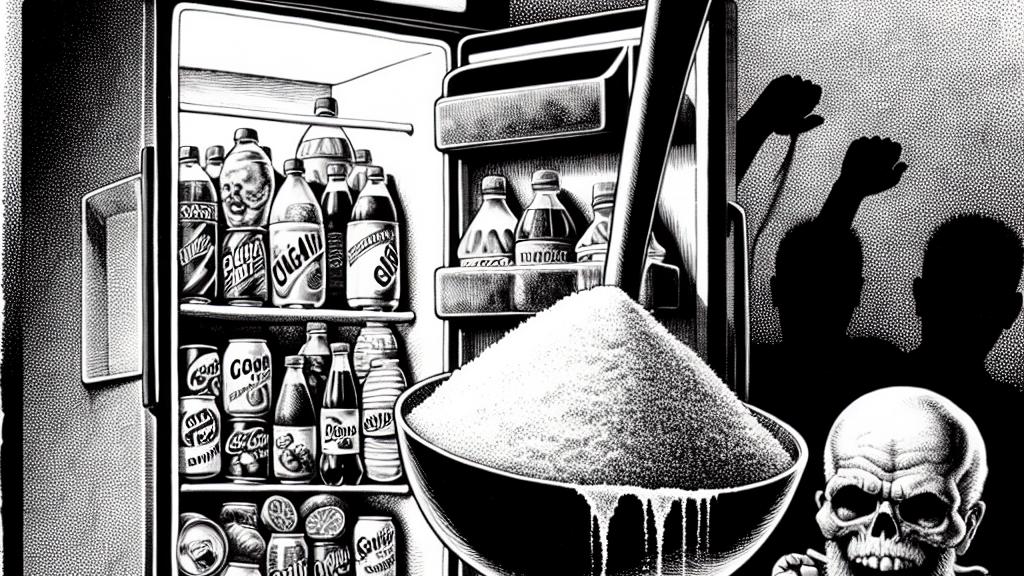The Dangerous Impact of Sugary Drinks on Health
Overview
- Sugary drinks are a primary driver of the alarming global rise in type 2 diabetes.
- Consistent consumption dramatically increases the risk of heart disease and other serious conditions.
- Comprehensive public health interventions are critically needed to mitigate these pressing health threats.

The Alarming Health Crisis Triggered by Sugary Drinks
Imagine grabbing a cold soda from the refrigerator. It seems harmless, right? However, sugary beverages like soda and fruit juices have infiltrated our diets to such an extent that they represent one of the most significant health crises of our time. According to a groundbreaking study published in Nature Medicine, a staggering 2.2 million people every year are diagnosed with type 2 diabetes due to the consumption of these sugar-laden drinks. To put this into perspective, consider that a typical can of soda can contain anywhere from 7 to 10 teaspoons of sugar—an amount so rich that it can hardly be processed efficiently by the body. It’s shocking to realize that something so commonplace can have such catastrophic effects on our health, leading to widespread public health issues affecting millions globally.
The Growing Obesity Epidemic: A Hidden Danger
Now let's delve into another layer of this issue: obesity. Sugary drinks play a pivotal role in the escalating obesity epidemic, but why? The simple answer is this: liquid sugars do not fill you up like solid foods do. This means people often consume additional calories without even realizing it! Research indicates that each daily serving of sugar-sweetened beverages raises the risk of obesity by approximately 60% in children alone! This is particularly troubling because obesity is not just a personal health concern—it’s a national crisis, burdening healthcare systems everywhere. For example, in the United States, sugary drinks have surged to become a top calorie source among teens, surpassing even pizza, which underscores how deeply ingrained these beverages have become in our diets.
Geographical Trends and Their Health Implications
When we look globally, fascinating patterns emerge regarding sugary drink consumption. Regions like sub-Saharan Africa and Latin America reveal that a substantial percentage of new type 2 diabetes cases arise directly from sugary drink consumption—over 20% in some areas! In Colombia, for instance, an astonishing 48% of newly diagnosed diabetes cases can be blamed on sugary beverages. This is not just alarming; it highlights where public health measures must focus urgently. As beverage companies continue to seek out new markets, understanding these high-risk regions becomes crucial for implementing effective health interventions that could save countless lives.
Raising Awareness: Education as a Key Tool
It’s quite intriguing to note a potential relationship between education levels and sugary drink consumption patterns. In many regions, individuals with higher educational attainment might still consume these drinks excessively, suggesting a profound gap in effective public health messaging. Therefore, comprehensive campaigns that actively educate the public on the dangers of sugary beverages, while simultaneously promoting healthier choices, become increasingly vital. For instance, the recent introduction of sugar taxes in the UK has led to a remarkable 50% reduction in sugary drink consumption among children, demonstrating that thoughtful public health interventions can indeed yield positive results if implemented widely.
Taking Action: Urgency in Addressing the Sugary Drink Crisis
Tackling the dangerous effects of sugary beverages requires resolute action from policymakers who must confront the stark realities of their impact on public health. Experts emphasize the necessity of multifaceted strategies including the regulation of sugary beverage advertising, comprehensive public health education, and the imposition of taxes on these high-sugar products. Such measures are not merely suggestions—they are urgent actions needed to reduce consumption rates and ultimately combat the serious health challenges posed by sugary drinks. If we ignore the repercussions of widespread sugary drink consumption, we risk plunging into a healthcare crisis that is not just preventable, but fatefully predictable.

Loading...